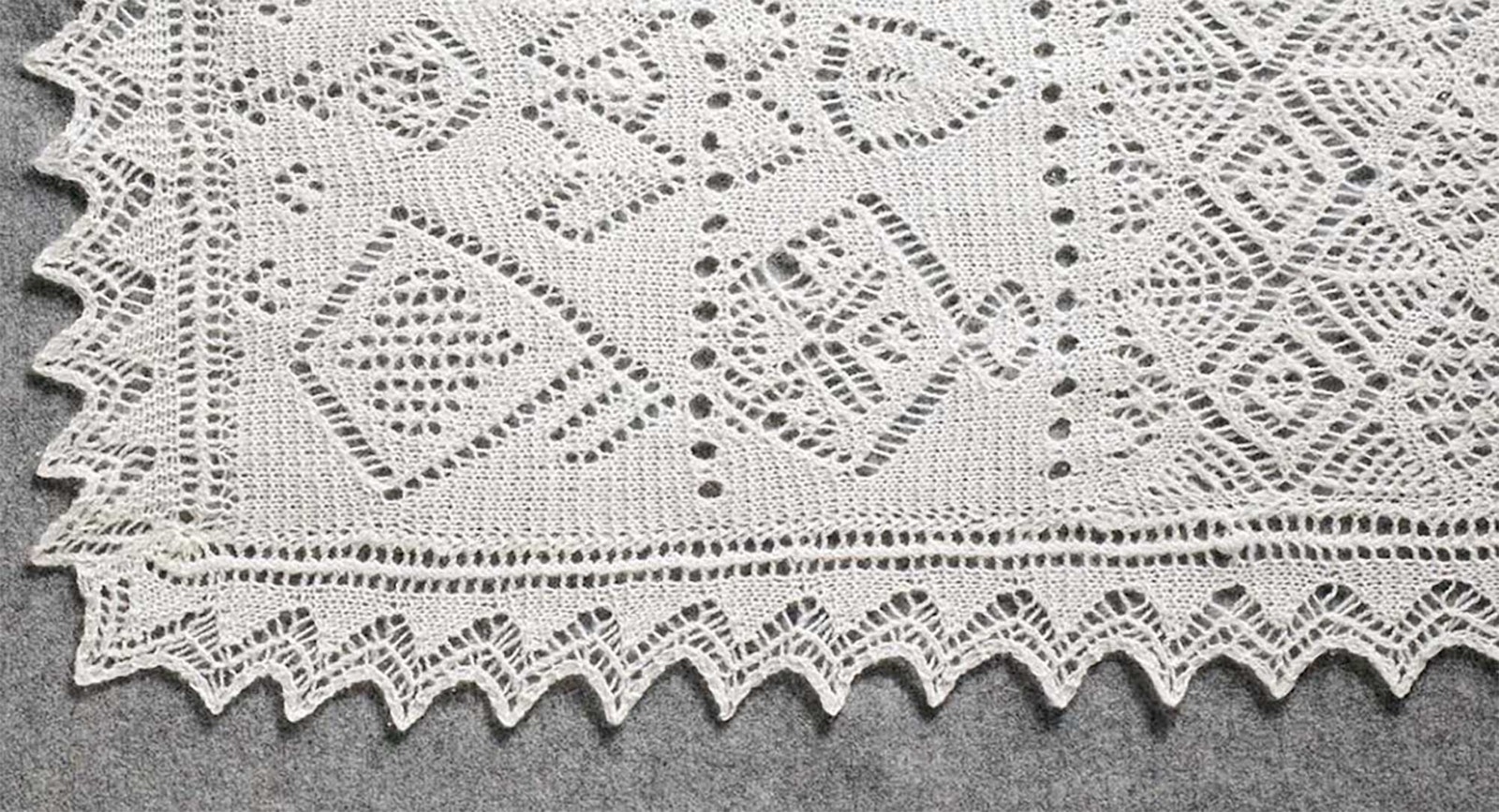The Torchon lace from the excavation of the paddleboat Arabia [see Bart Elwell’s companion article, “Lace of the Arabia,” which was featured in the May/June 2015 issue of PieceWork] that inspired this project was a product of the technique of bobbin-lace. For this edging, crochet is used instead.
Crochet has proven to be a perfect technique to mimic other forms of lace, including bobbin lace, filet, tatting, Venetian needle lace, and drawn thread work. The idea of using crochet to imitate other laces probably came about as soon as lacemakers realized how versatile crochet could be. Torchon-style lace, whether it is made as a traditional bobbin lace or in crochet, makes a nice clean line edging to add the right touch to any project.
From my pattern collection, I found Torchon crochet patterns first appearing in a couple of “art” crochet pattern booklets, which are not dated but appear to be from about the nineteen teens. Torchon crochet seemed to fade from patterns books for a while only to show up again in issues of Needlecraft Magazine of the early 1930s.
Bart Elwell’s stellar edging in Torchon crochet will be lovely on bed and table linens as well as apparel. Portrait scissors and crochet hook collection of Bart Elwell. Photo by Joe Coca.
Materials
Presencia Fincrochet, 100% cotton thread, size 80, 1,301 yards (1,189.6 m)/50 gram (1.8 oz) ball, 1 ball of #3000 Ecru
Crochet hook, steel, size 13 (.85 mm)
Finished size: About 1 inch (2 cm) in depth; each repeat, about 1 inch (2 cm) wide
Gauge: Gauge is not critical for this project
—Bart Elwell
Bart Elwell (1962–2015) was a self-taught crocheter who was fascinated with the technical challenges of needlework. He was a member of the International Organization of Lace, Inc. (IOLI). Designing and teaching classes on lacemaking techniques were his favorite parts of the needle arts. Bart was a frequent and beloved PieceWork contributor.
Download a copy of the May/June 2015 issue of PieceWork to crochet your own Torchon lace. For a lace edging to knit, see our blog post, “Knit Hilton Lace Edging for Pillowcases.”


